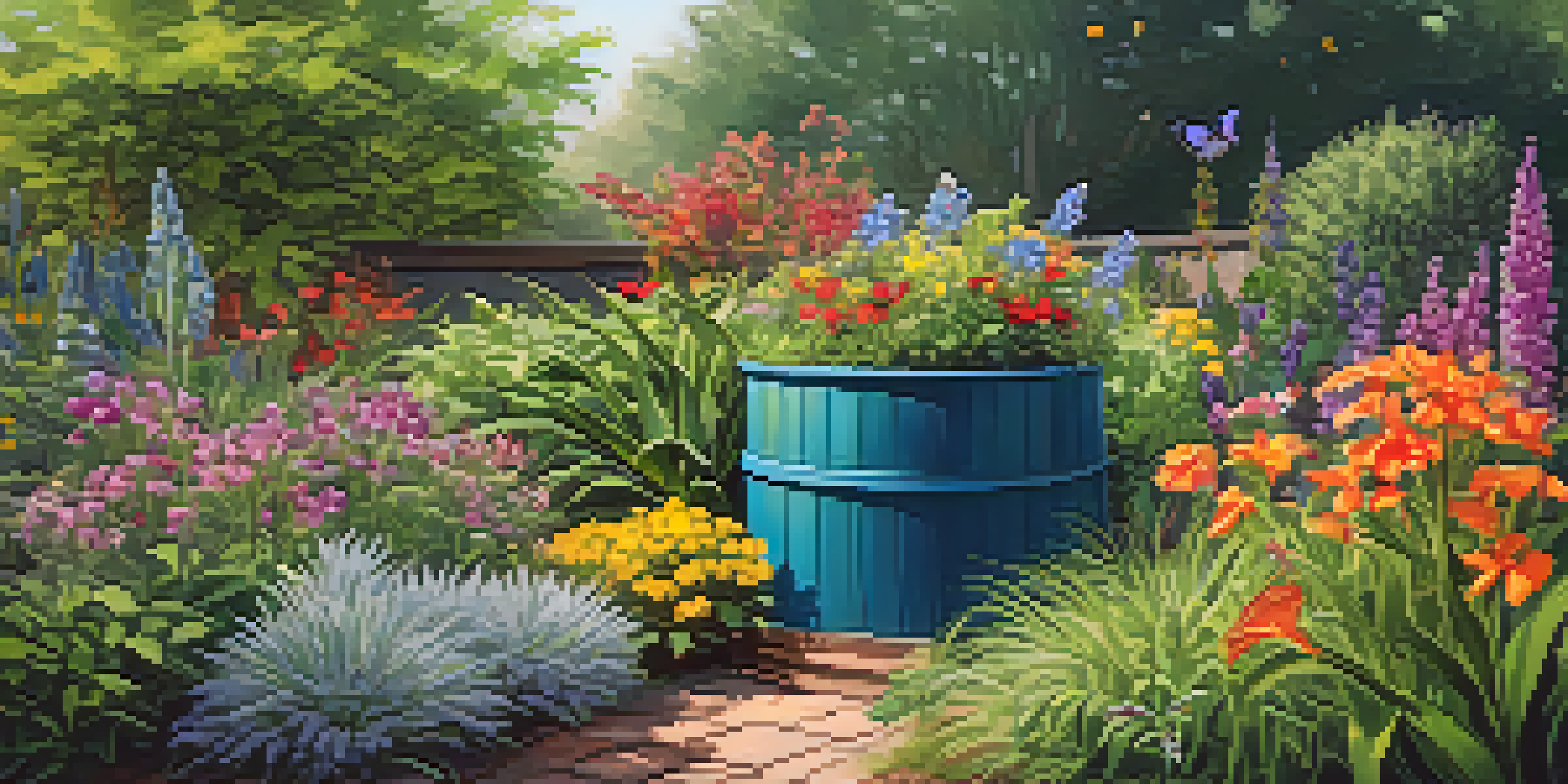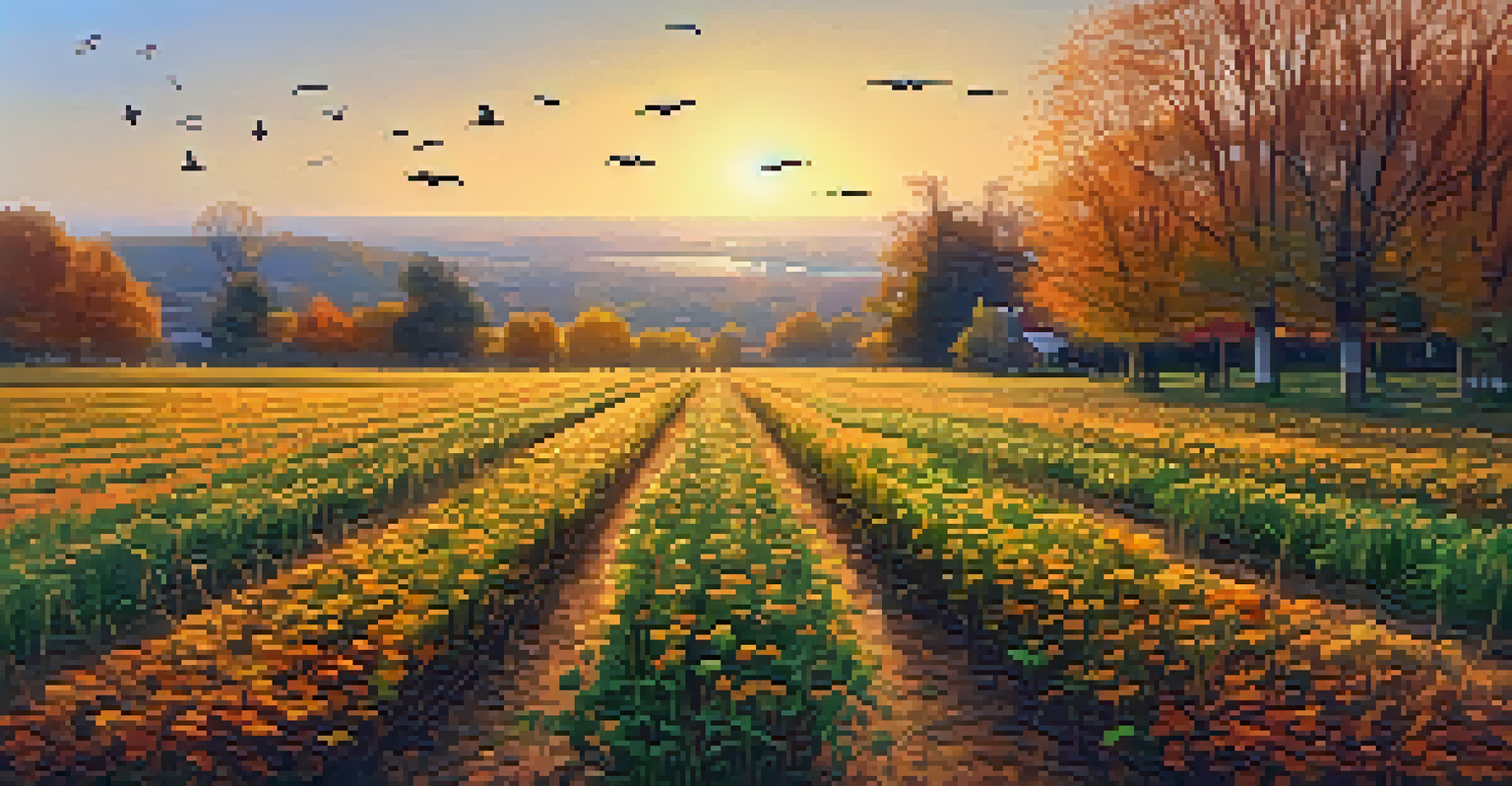Sustainable Garden Maintenance: Best Practices for Care

Understanding Sustainable Gardening and Its Importance
Sustainable gardening focuses on creating a balanced ecosystem that supports both plants and wildlife. By using practices that minimize environmental impact, we can enjoy beautiful gardens without harming the planet. This approach not only benefits our immediate surroundings but also contributes to larger environmental goals, such as reducing carbon footprints.
The greatest threat to our planet is the belief that someone else will save it.
One of the key principles is working with nature instead of against it. For example, using native plants can reduce the need for pesticides and fertilizers since these plants are adapted to local conditions. This not only makes maintenance easier but also creates a habitat for local wildlife, promoting biodiversity.
Incorporating sustainable practices into your garden care can be both rewarding and enjoyable. By understanding the profound impact our gardening choices have, we can cultivate spaces that are not only visually appealing but also environmentally friendly.
Soil Health: The Foundation of a Sustainable Garden
Healthy soil is the backbone of any thriving garden. By focusing on enriching your soil with organic matter, you can improve its structure, water retention, and nutrient availability. Composting kitchen scraps and yard waste is a fantastic way to enhance soil health while reducing waste.

Additionally, practicing crop rotation and cover cropping can help maintain soil nutrients and prevent erosion. This means that different plants are grown in succession on the same land, which can help break pest and disease cycles. Think of it like giving your soil a rest by rotating the types of plants it supports.
Sustainable Gardening Enhances Ecosystems
By embracing sustainable gardening practices, we create a balanced ecosystem that supports plant and wildlife health.
Regular soil testing can also provide insights into nutrient levels, allowing you to make informed decisions about amendments. By prioritizing soil health, you're setting your garden up for long-term success and sustainability.
Water Conservation Strategies for Your Garden
Water conservation is crucial in sustainable gardening, especially in drought-prone areas. Implementing rainwater harvesting systems can help collect and utilize natural rainfall, reducing reliance on municipal water supplies. Simple setups like rain barrels can make a big difference in your garden's water needs.
What we are doing to the forests of the world is but a mirror reflection of what we are doing to ourselves and to one another.
Another effective strategy is to use drip irrigation systems. This method delivers water directly to the plant roots, minimizing evaporation and runoff. It's like giving each plant a refreshing drink without wasting a drop, ensuring they receive just the right amount of water.
Mulching your garden beds is also an excellent way to retain moisture in the soil. Organic mulches, such as wood chips or straw, not only help keep the soil moist but also suppress weeds and improve soil quality as they decompose. These small changes can lead to significant water savings over time.
Choosing Native and Drought-Resistant Plants
Selecting native and drought-resistant plants is a fundamental aspect of sustainable gardening. Native plants are adapted to the local climate and soil conditions, requiring less water and maintenance than non-native varieties. By choosing these plants, you’re also supporting local wildlife, such as pollinators and birds.
Drought-resistant plants often have unique adaptations, like deep root systems or waxy leaves, that help them thrive in dry conditions. Incorporating these plants not only enhances the beauty of your garden but also significantly reduces your water usage. Think of these plants as nature's way of saying, 'I've got this!'
Soil Health is Essential for Growth
Healthy soil, enriched with organic matter and maintained through practices like composting, is the foundation for a thriving garden.
When planning your garden, consider grouping plants with similar water needs together. This practice, known as hydrozoning, allows you to water more efficiently while ensuring that each plant thrives. By making thoughtful plant choices, you’re creating a resilient garden that can withstand changing weather patterns.
Natural Pest Management Techniques for Garden Health
Managing pests naturally is a cornerstone of sustainable gardening. Instead of reaching for chemical pesticides, consider introducing beneficial insects like ladybugs or lacewings, which can help control pest populations. These natural allies can create a balanced ecosystem, reducing the need for harsh chemicals.
Companion planting is another effective strategy. This involves growing certain plants together to naturally repel pests or attract beneficial insects. For instance, planting marigolds alongside vegetables can deter harmful pests while nurturing a vibrant garden.
Regular monitoring is essential for early detection of pest issues. By observing your plants and understanding their needs, you can intervene with targeted, low-impact solutions. Embracing natural pest management not only protects your garden but also promotes a healthier environment.
The Role of Composting in Sustainable Garden Maintenance
Composting is a simple yet powerful way to enhance your garden's sustainability. By recycling kitchen scraps and yard waste, you can create nutrient-rich compost that enriches your soil. This process not only reduces landfill waste but also provides plants with the organic matter they need to thrive.
A well-maintained compost pile can produce high-quality compost in a matter of months. You’ll want to balance green materials, like fruit and vegetable scraps, with brown materials, like dried leaves and cardboard. When these materials break down, they create a rich, earthy substance that feeds your garden.
Native Plants Save Water and Resources
Choosing native and drought-resistant plants not only conserves water but also supports local wildlife and promotes biodiversity.
Incorporating compost into your garden not only improves soil health but also enhances water retention and encourages beneficial microorganisms. This means healthier plants, which can better withstand pests and diseases. So, think of composting as nurturing your garden while helping the planet.
Seasonal Practices for Sustainable Garden Management
Seasonal practices are vital in maintaining a sustainable garden throughout the year. As the seasons change, adjusting your gardening techniques can lead to healthier plants and better yields. For instance, in the spring, focus on soil preparation and planting, while summer can be dedicated to watering and pest control.
In autumn, consider planting cover crops to enrich the soil and prevent erosion during the winter months. These crops can improve soil structure and add nutrients when they decompose. Think of it as giving your garden a cozy blanket to protect it during the colder months.

Finally, winter is a great time for planning and reflection. Assess your garden's successes and challenges from the past year, and make adjustments for the next season. By integrating seasonal practices, you’re not just maintaining your garden; you’re fostering a living, evolving ecosystem.